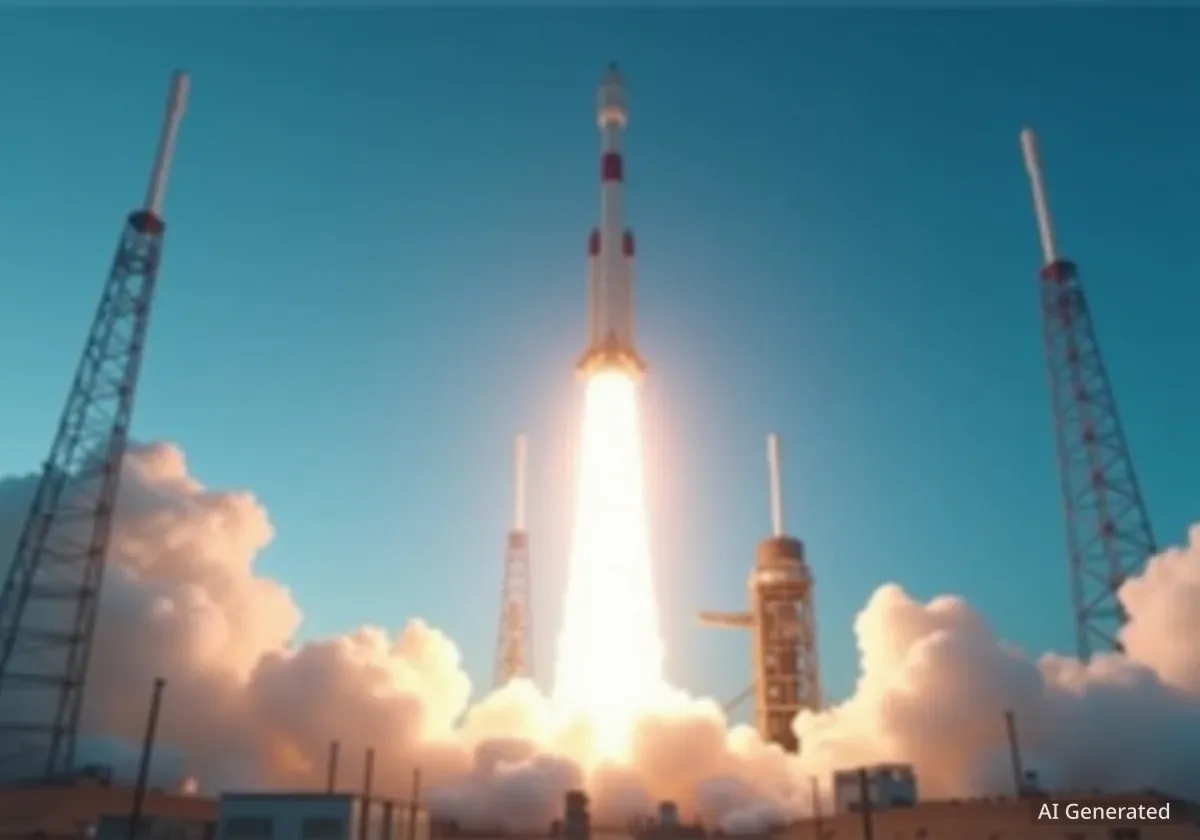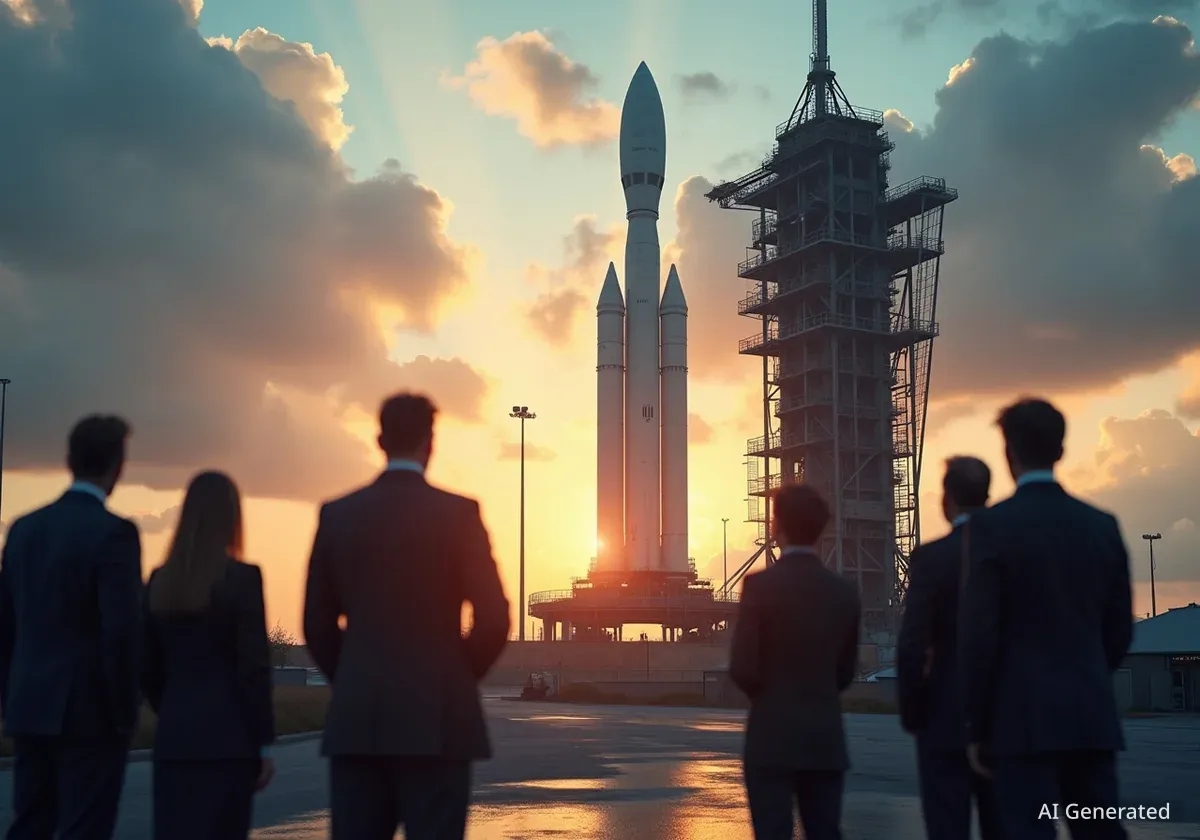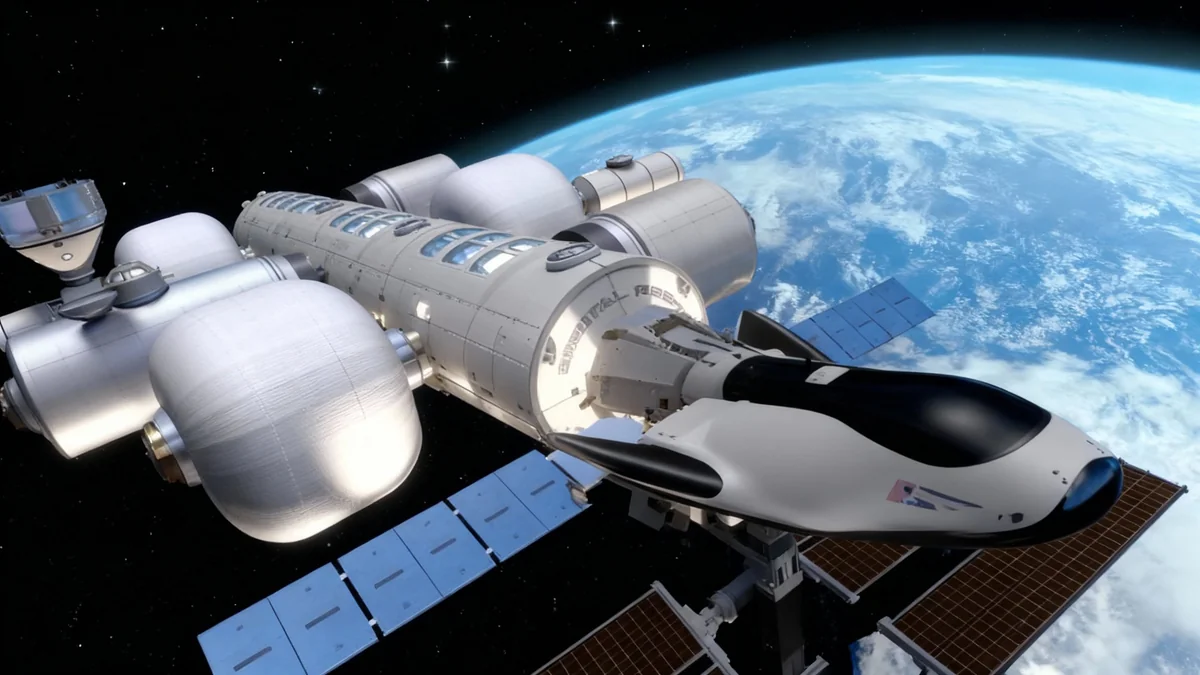Elon Musk, the founder of SpaceX, has stated that his company is on track to launch approximately 90% of the total payload mass sent from Earth into space this year. This declaration highlights the company's significant position in the global launch industry.
In a statement made on the social media platform X, Musk described SpaceX as being “pretty much Earth’s space program,” underscoring its substantial market share and operational capacity compared to other national and commercial launch providers.
Key Takeaways
- Elon Musk claims SpaceX will transport about 90% of all payload mass from Earth to space in the current year.
- The development of the Starship rocket is central to future plans, with projections of carrying up to 98% of Earth's payload by 2027.
- SpaceX recently completed a successful 10th test launch of its Starship vehicle, a key component of its long-term strategy.
- The potential appointment of Jared Isaacman as NASA administrator could align with SpaceX's ambitions for human missions to Mars.
SpaceX's Current Market Position
SpaceX has established a commanding presence in the global space launch market. The company's reusable rocket technology, particularly with the Falcon 9 and Falcon Heavy vehicles, has dramatically reduced the cost of accessing space, attracting a wide range of clients from commercial satellite operators to government agencies like NASA.
Musk's recent claim that SpaceX will handle 90% of the world's payload mass is a significant statement about the company's operational tempo and capability. This figure represents the total weight of satellites, cargo, and other materials launched into orbit, not just the number of launches.
"SpaceX will carry ~90% of the world’s payload mass to space this year, so it is pretty much Earth’s space program," Elon Musk stated in a post on X.
This dominance is the result of a high launch cadence. SpaceX frequently launches its Falcon 9 rockets, sometimes multiple times in a single week, from its launch sites in Florida and California. This rapid pace allows the company to deploy large satellite constellations, such as its own Starlink internet service, and fulfill contracts for a variety of customers.
The Starship Program and Future Ambitions
While the Falcon family of rockets underpins current operations, SpaceX's future plans are heavily reliant on the development of Starship. This next-generation, fully reusable spacecraft is designed to carry significantly more mass to orbit than any rocket in history.
Musk has previously provided even more ambitious projections tied to Starship's success. He has suggested that once Starship is fully operational, SpaceX's share of Earth's payload to orbit could increase to nearly 95%. He further projected that this figure could climb as high as 98% by the year 2027.
Starship Development Milestones
SpaceX recently conducted its 10th successful test launch of the Starship rocket. These iterative tests are crucial for refining the vehicle's design and operational procedures, moving closer to its first orbital flight and eventual crewed missions.
The company is also working on larger versions of the rocket. According to Musk, the upcoming Starship V3 and V4 models will offer increased size and payload capacity. This continuous development is aimed at making the transportation of massive amounts of cargo to space routine and cost-effective.
Long-Term Goals for Mars
The ultimate goal for the Starship program is to enable the colonization of Mars. Musk's vision involves creating a self-sustaining city on the Red Planet, which would require an unprecedented logistical effort.
To achieve this, he has estimated that humanity would need to transport:
- Approximately 100,000 people
- Over 1 million tons of cargo and supplies
Starship is the only vehicle currently in development with the projected capacity to make such a mission feasible. Its ability to be rapidly and fully reused is the cornerstone of the plan to reduce the cost of interplanetary travel.
Potential Leadership Changes at NASA
The political landscape in Washington could also play a role in the future of space exploration. Jared Isaacman, a billionaire entrepreneur and founder of Shift4 Payments Inc., is reportedly being considered again for the role of NASA Administrator.
Who is Jared Isaacman?
Jared Isaacman is a commercial astronaut who commanded the Inspiration4 mission, the first all-civilian private spaceflight to orbit Earth. He has worked closely with SpaceX on private missions and is a vocal advocate for expanding human presence in space.
Isaacman was previously nominated for the position by President Donald Trump, but the nomination was withdrawn. His potential reappointment is significant because of his strong support for human missions to Mars, a goal that aligns closely with Elon Musk's long-term vision for SpaceX.
During a Senate hearing earlier this year, Isaacman emphasized the importance of pushing forward with human exploration of Mars. If appointed as the head of NASA, his leadership could potentially foster closer collaboration between the government agency and commercial partners like SpaceX on ambitious deep-space missions.
Implications for the Global Space Industry
SpaceX's growing market share and technological advancements are reshaping the entire aerospace industry. The company's success with reusable rockets has forced legacy aerospace contractors and national space agencies to re-evaluate their own launch strategies.
The projected 90% payload dominance for this year indicates a significant consolidation of launch services. While this demonstrates the effectiveness of SpaceX's model, it also raises questions about market competition and the reliance of the global community on a single private entity for access to space.
As SpaceX continues to advance its Starship program, its influence is only expected to grow. The vehicle's potential to launch over 100 metric tons of payload at a fraction of current costs could unlock new possibilities for science, commerce, and exploration, further solidifying the company's central role in humanity's future in space.





